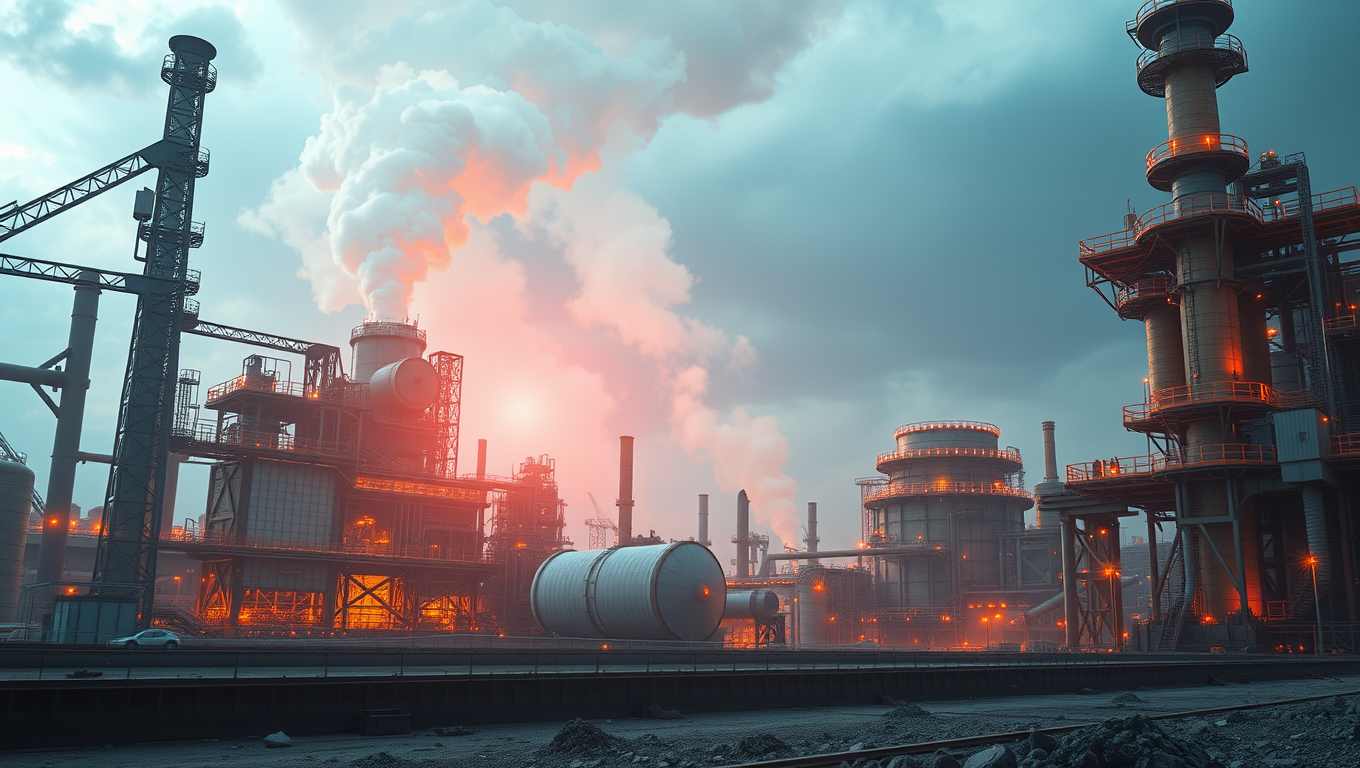While we try to keep things accurate, this content is part of an ongoing experiment and may not always be reliable.
Please double-check important details — we’re not responsible for how the information is used.
Air Pollution
A Step Towards Cleaner Iron Extraction: Harnessing Electricity for a Greener Future
Iron and its alloys, such as steel and cast iron, dominate the modern world, and there’s growing demand for iron-derived products. Traditionally, blast furnaces transform iron ore into purified elemental metal, but the process requires a lot of energy and emits air pollution. Now, researchers report that they’ve developed a cleaner method to extract iron from a synthetic iron ore using electrochemistry, which they say could become cost-competitive with blast furnaces.

Air Pollution
“Breathe Deeply: A 29-Million-Person Study Reveals the Silent Dangers of Air Pollution on Dementia Risk”
Air pollution isn’t just bad for your lungs—it may be eroding your brain. In a sweeping review covering nearly 30 million people, researchers found that common pollutants like PM2.5, nitrogen dioxide, and soot are all linked to a significantly higher risk of dementia. The most dangerous? PM2.5—tiny particles from traffic and industry that can lodge deep in your lungs and reach your brain.
Acid Rain
The Nanoplastics Paradox: Uncovering the Shocking Amounts of Tiny Plastic Particles in Our Oceans
Millions of tons of plastic in the ocean aren’t floating in plain sight—they’re invisible. Scientists have now confirmed that the most abundant form of plastic in the Atlantic is in the form of nanoplastics, smaller than a micrometer. These particles are everywhere: in rain, rivers, and even the air. They may already be infiltrating entire ecosystems, including the human brain, and researchers say prevention—not cleanup—is our only hope.
Air Pollution
Unveiling 12,000 Years of European History: The Mont Blanc Ice Core Record
An ancient glacier high in the French Alps has revealed the oldest known ice in Western Europe—dating back over 12,000 years to the last Ice Age. This frozen archive, meticulously analyzed by scientists, captures a complete chemical and atmospheric record spanning humanity’s transition from hunter-gatherers to modern industry. The core contains stories of erupting volcanoes, changing forests, Saharan dust storms, and even economic impacts across history. It offers a rare glimpse into both natural climate transitions and human influence on the atmosphere, holding vital clues for understanding past and future climate change.
-

 Detectors7 months ago
Detectors7 months agoA New Horizon for Vision: How Gold Nanoparticles May Restore People’s Sight
-

 Earth & Climate8 months ago
Earth & Climate8 months agoRetiring Abroad Can Be Lonely Business
-

 Cancer7 months ago
Cancer7 months agoRevolutionizing Quantum Communication: Direct Connections Between Multiple Processors
-

 Albert Einstein8 months ago
Albert Einstein8 months agoHarnessing Water Waves: A Breakthrough in Controlling Floating Objects
-

 Diseases and Conditions8 months ago
Diseases and Conditions8 months agoReducing Falls Among Elderly Women with Polypharmacy through Exercise Intervention
-

 Chemistry7 months ago
Chemistry7 months ago“Unveiling Hidden Patterns: A New Twist on Interference Phenomena”
-

 Earth & Climate7 months ago
Earth & Climate7 months agoHousehold Electricity Three Times More Expensive Than Upcoming ‘Eco-Friendly’ Aviation E-Fuels, Study Reveals
-

 Agriculture and Food8 months ago
Agriculture and Food8 months ago“A Sustainable Solution: Researchers Create Hybrid Cheese with 25% Pea Protein”





























